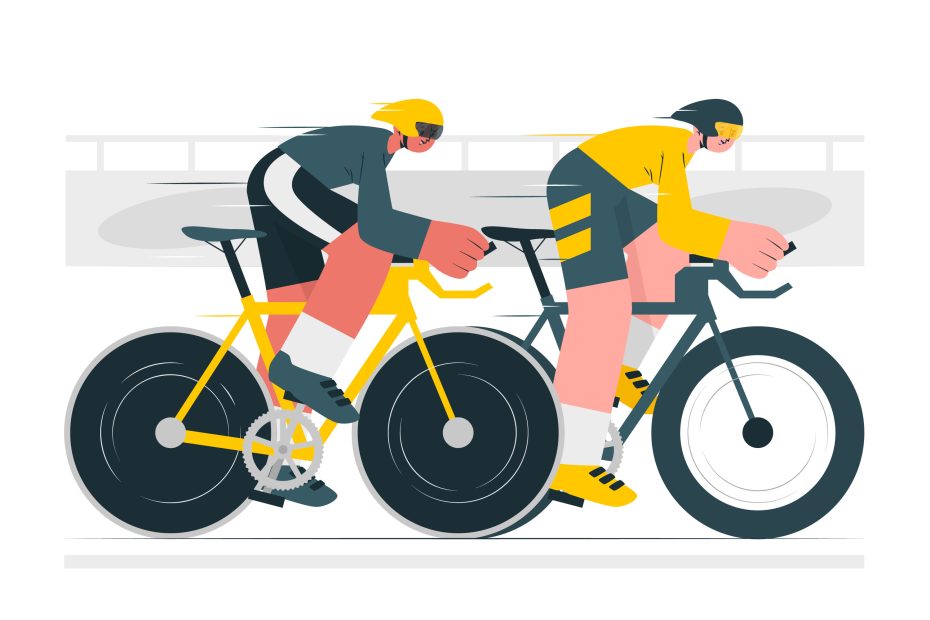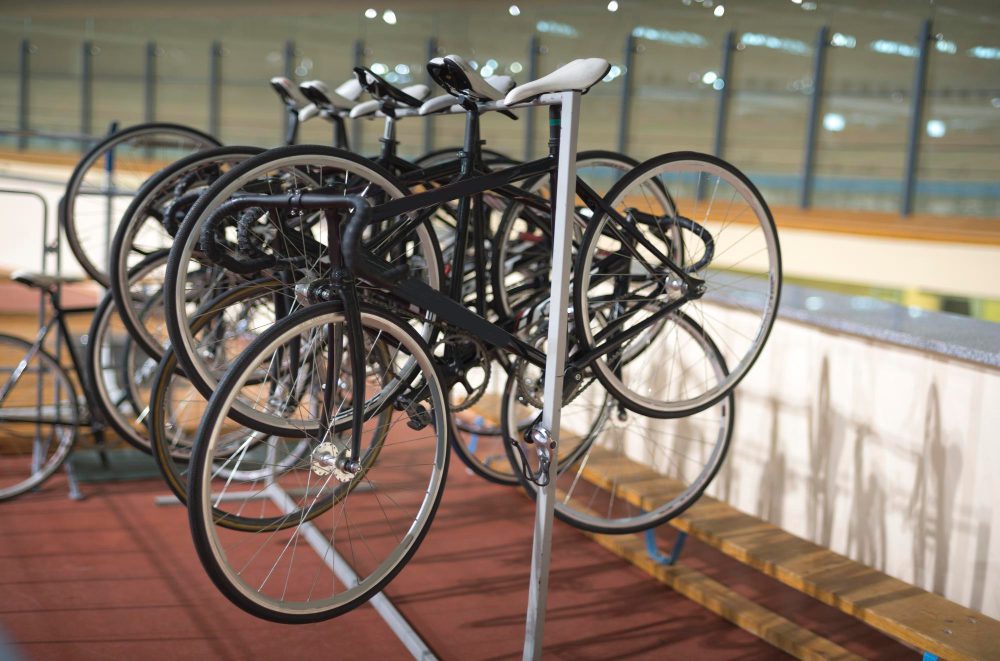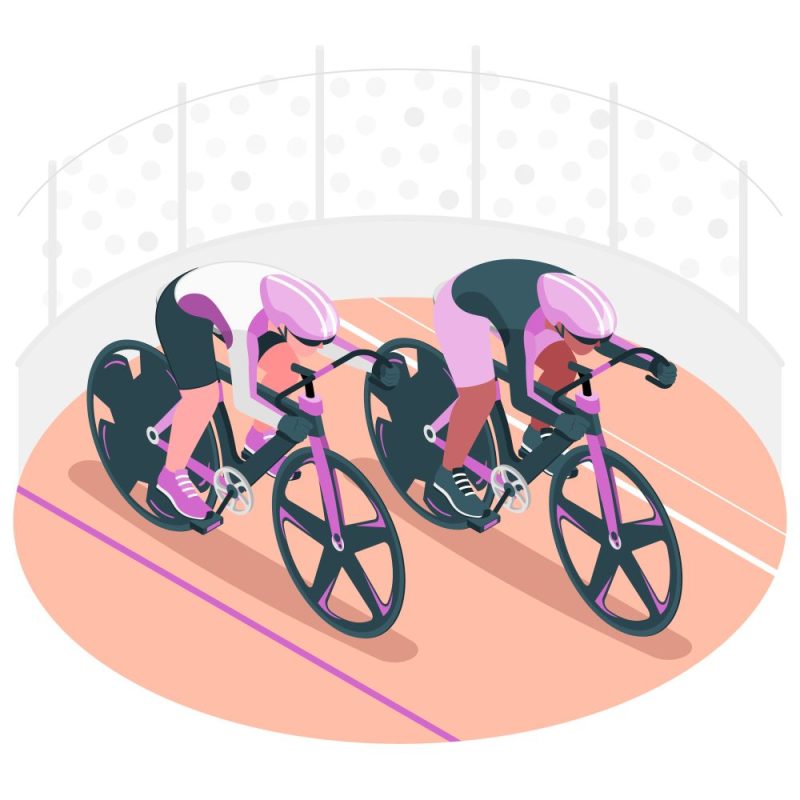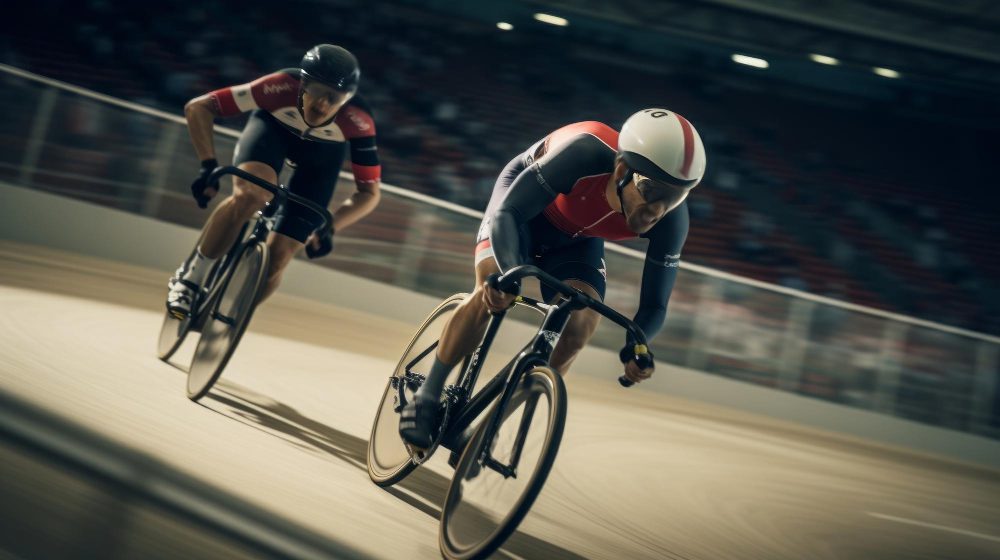Can you put a front brake on a track bike?
Track bikes are designed for racing on velodromes, which are oval-shaped, banked tracks specifically built for cycling. These bikes are built for speed and are often stripped down to the essentials, without any unnecessary components that can add weight or hinder performance. One such component that is typically omitted on track bikes is the front brake.
The short answer is yes, you can put a front brake on a track bike. However, it is important to note that it may not be legal or ideal for use on a velodrome.
Why don’t track bikes come with front brakes?
Track bikes are designed for racing in a controlled environment where all riders are moving in the same direction. The fixed gear system, which means the pedals are always in motion when the bike is in motion, allows for quick acceleration and precise control. Additionally, the steep banked turns of a velodrome enable riders to slow down or stop by using only their leg power and the resistance of the fixed gear system.
By eliminating the front brake, track bikes become lighter, more aerodynamic, and simpler in design. This allows riders to maximize their speed and performance on the velodrome, where every millisecond counts.
Is it legal to put a front brake on a track bike?
The legality of adding a front brake to a track bike depends on where you plan to ride it. If you intend to use the bike strictly for racing on a velodrome, most governing bodies such as British Cycling and the Union Cycliste Internationale (UCI) prohibit the use of front brakes in official races.
“A bicycle used in competition under UCI regulations shall be a vehicle moved exclusively by the efforts of its rider’s legs.”
However, if you plan to ride your track bike on public roads or other non-competitive settings, it is generally legal and advisable to have a front brake installed. In fact, it is a legal requirement in the UK for bicycles used on public roads to be equipped with efficient brakes.
Considerations and safety
If you decide to put a front brake on your track bike, there are several considerations to keep in mind:
- Compatibility: Ensure that the brake system you choose is compatible with your track bike’s frame and fork.
- Installation: Proper installation of the front brake is crucial to ensure its effectiveness and safety. If you are unsure, consult a professional bike mechanic.
- Balance: Adding a front brake can affect the balance and handling characteristics of your track bike. Take the time to adjust and get accustomed to the changes before riding at high speeds.
To summarize, while it is technically possible to put a front brake on a track bike, it may not be allowed or recommended for use on a velodrome due to regulations and design considerations. However, if you plan to ride your track bike outside of a competitive setting, adding a front brake can improve safety and comply with legal requirements.
Why do Olympic bikes have solid wheels?
When watching the Olympic cycling events, you may have noticed the unique design of the bikes used by the athletes. One striking feature is the use of solid wheels instead of traditional spokes. This design choice is not just for aesthetics but actually offers several advantages for performance and speed.
Aerodynamics:
The main reason behind the use of solid wheels is to enhance aerodynamics. The smooth surface of the solid wheel reduces air resistance, allowing the cyclist to move through the air with less effort. This enables the riders to achieve higher speeds and improve their overall performance on the track.
Stiffness and Power Transfer:
Another advantage of solid wheels is their stiffness. Unlike traditional spoked wheels, which can flex under pressure, solid wheels maintain their shape and provide a more rigid platform for power transfer. This means that the energy generated by the cyclist’s legs is efficiently transferred to the wheels, resulting in improved acceleration and speed.
Reduced Weight:
Although solid wheels may appear heavy, they are actually lighter than traditional spoked wheels used for everyday cycling. By eliminating the need for numerous spokes, the overall weight of the wheel is reduced. This weight reduction contributes to the overall agility and maneuverability of the bike, especially during races that involve quick turns and sprints.
Fun Fact: In the pursuit of maximum efficiency, some Olympic cyclists even use carbon fiber solid wheels, which offer an optimal balance between weight and rigidity.
In addition to these benefits, solid wheels also eliminate the risk of spoke failure, which can occur due to fatigue or damage. This makes them a reliable choice for professional athletes who cannot afford any mechanical mishaps during their races.
| Advantages | Solid Wheels | Spoked Wheels |
|---|---|---|
| Aerodynamics | ✓ | ✓ |
| Stiffness | ✓ | ✓ |
| Weight | ✓ | ✓ |
| Reliability | ✓ | ✓ |
In conclusion, Olympic bikes have solid wheels primarily for aerodynamic advantages, improved power transfer, and reduced weight. The use of solid wheels enhances the performance of cyclists by minimizing air resistance, maintaining rigidity, and optimizing acceleration. These wheels provide a reliable and efficient option for professional athletes, ensuring a smooth and speedy ride in pursuit of Olympic gold.
Why do you stop moving when you stop pedaling while on your bike?
Have you ever wondered why your bike comes to a halt as soon as you stop pedaling? It may seem like a straightforward question, but the answer lies in the physics of cycling. Let’s delve into the science behind this phenomenon.
Inertia and Friction
When you pedal your bike, you create forward motion by applying force to the pedals. This force propels the bike forward due to a combination of inertia and friction. Inertia is the tendency of an object to resist changes in its motion, while friction acts against the forward motion, causing resistance to movement.
As long as you continue pedaling, the force you apply overcomes the resistance from friction, allowing you to maintain your speed. However, when you stop pedaling, the force diminishes, and friction takes over. The energy you had imparted to the bike through pedaling gradually dissipates, resulting in a decrease in speed until you come to a complete stop.
The Role of Gravity
Gravity also plays a significant role in why you stop moving when you stop pedaling. When you pedal uphill, gravity acts against your forward motion, making it more difficult to maintain speed. Conversely, when cycling downhill, gravity assists you, making it easier to sustain momentum even without pedaling.
When you stop pedaling while on a level surface, gravity still pulls you downward. The absence of force from pedaling, combined with gravitational resistance, results in deceleration and ultimately brings the bike to a stop.
The Impact of Air Resistance
Air resistance is another factor that contributes to the slowing down of a bike when pedaling ceases. As you ride, your bike encounters resistance from the air, acting as a drag force. This force becomes more significant at higher speeds.
When you stop pedaling, you no longer contribute to overcoming this drag force. Therefore, the bike’s speed decreases more rapidly as the drag force takes effect, eventually causing the bike to stop moving.
So, the next time you wonder why your bike comes to a halt when you stop pedaling, remember that it is a combination of inertia, friction, gravity, and air resistance that work together to bring your bike to rest.
What Happens if You Shift Gears Without Pedaling?
Shifting gears is an essential part of cycling, allowing riders to adjust their speed and cadence according to the terrain. However, it is crucial to shift gears while pedaling to avoid potential damage to the bicycle’s drivetrain and ensure a smooth gear transition.
Shifting Gears Without Pedaling: Consequences
When you shift gears without pedaling, you may experience some negative effects:
1. **Gear Misalignment**: Shifting gears while coasting can lead to gear misalignment. This occurs when the chain is not properly engaged with the new gear, causing it to slip or jump gears unexpectedly.
2. **Chain Stress**: Pedaling helps maintain tension in the chain, ensuring a smooth transfer of power from the pedals to the rear wheel. Shifting gears without pedaling can stress the chain by suddenly introducing tension changes, potentially leading to chain slippage or even derailment.
3. **Drivetrain Wear**: Shifting gears while pedaling allows the derailleurs to smoothly guide the chain onto the desired gear. Without pedaling, the abrupt gear change can cause excessive wear on the chain, cassette, and chainrings.
Best Practices for Gear Shifting
To ensure a long-lasting and efficient drivetrain, follow these best practices:
- Shift While Pedaling: Always pedal while shifting gears to maintain chain tension and allow for seamless engagement between gears.
- Avoid Shifting Under Heavy Load: It’s best to shift gears before encountering steep inclines or when applying excessive force to the pedals, as this can put unnecessary stress on the drivetrain.
- Shift Incrementally: Instead of shifting multiple gears at once, shift one gear at a time to minimize sudden changes in chain tension.
Remember, proper gear shifting technique not only enhances your riding experience but also extends the lifespan of your bicycle’s drivetrain components.
The Importance of Regular Maintenance
To ensure your gears shift smoothly and efficiently, it’s crucial to maintain your bicycle regularly. Consider the following maintenance tasks:
| Maintenance Task | Frequency |
|---|---|
| Chain Lubrication | Every 100-150 miles |
| Gear Adjustment | Annually or as needed |
| Cleaning and Degreasing | Regularly or when visibly dirty |
By performing routine maintenance, you can prevent issues caused by improper gear shifting and prolong the lifespan of your bicycle.
In conclusion, shifting gears without pedaling can lead to gear misalignment, chain stress, and increased wear on your bicycle’s drivetrain components. To avoid such issues, always remember to shift gears while pedaling and follow best practices for gear shifting. Additionally, make sure to maintain your bicycle regularly to ensure smooth and efficient gear transitions.



